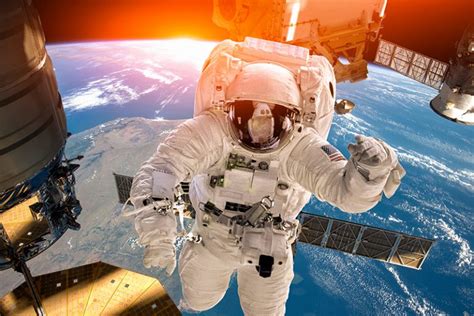The Role of Technology in Space Exploration

Explore the latest advancements in space technology, AI integration, robotics, 3D printing, and telecommunication in interplanetary travel. Learn about the future of space exploration.As we look to the stars and beyond, the role of technology in space exploration has become increasingly vital. From advancements in space technology to the integration of artificial intelligence and robotics, the possibilities for extraterrestrial exploration have expanded exponentially. In this blog post, we will delve into the various ways in which technology has revolutionized space exploration. We will explore the use of AI and robotics in space missions, the benefits of 3D printing in a space environment, and the advancements in telecommunication for interplanetary travel. Join us as we take a closer look at the exciting developments that are shaping the future of space exploration, and the groundbreaking ways in which technology is propelling us further into the cosmos.
Advancements in Space Technology
Space exploration has always been a great fascination for mankind, and with the advancements in technology, the possibilities seem endless. The development of space technology has enabled humans to explore the unknown and discover more about the universe. From the invention of the telescope to the launch of satellites, technology has played a crucial role in expanding our knowledge of outer space.
One of the most significant advancements in space technology is the development of rocket propulsion systems. The invention of powerful rockets has allowed us to send spacecraft and satellites deeper into space, paving the way for interplanetary missions. With the help of advanced propulsion systems, we can now reach distant planets, moons, and even asteroids, opening up new avenues for exploration and scientific research.
Moreover, the integration of artificial intelligence (AI) has revolutionized space exploration. AI-powered rovers and spacecraft can autonomously navigate through extraterrestrial terrain, collect data, and make decisions in real-time. These technological advancements have enabled us to study other planets and celestial bodies with unprecedented accuracy, providing valuable insights into the composition and environment of these distant worlds.
Integration of AI in Space Missions
Artificial Intelligence (AI) has been playing an increasing role in space missions, revolutionizing the way we explore and understand the universe. With the advancements in AI technology, space agencies have been able to integrate AI into various aspects of space missions, from autonomous spacecraft navigation to data analysis and decision-making.
One of the key areas where AI has made a significant impact is in autonomous navigation. Spacecraft equipped with AI-powered systems can analyze and respond to complex stimuli in real time, making split-second decisions to avoid obstacles and navigate through unknown terrain. This level of autonomy is crucial for future manned missions to distant planets, where real-time communication with Earth is impossible.
Furthermore, AI is also being used for data analysis and interpretation. With the vast amount of data collected during space missions, AI algorithms can quickly sift through the information to identify patterns, anomalies, and interesting phenomena that might have otherwise gone unnoticed. This ability to process and interpret data in real time is invaluable for making informed decisions during space exploration.
Use of Robotics for Extraterrestrial Exploration
In the exploration of extraterrestrial environments, the use of robotics has become an essential tool for scientists and researchers. Robotics allows for the exploration of distant planets and moons without risking human lives, as well as achieving tasks that would be impossible for humans to accomplish. Through the integration of advanced technology, robotic explorers are able to collect data, take samples, and conduct experiments in environments that are inhospitable to humans.
Rover missions to Mars have been a prime example of the use of robotics for extraterrestrial exploration. The Mars rovers, equipped with cameras, sensors, and scientific instruments, have provided valuable insights into the geological and atmospheric conditions of the red planet. These robotic explorers have also played a crucial role in the search for signs of past or present life on Mars, furthering our understanding of the possibility of extraterrestrial life.
Furthermore, the development of autonomous robotic systems has allowed for continuous exploration of extraterrestrial environments. These robotic systems are equipped with artificial intelligence and advanced navigation capabilities, enabling them to make decisions and carry out tasks independently. As technology continues to advance, the use of robotics for extraterrestrial exploration will only become more crucial in our quest to unlock the mysteries of the universe.
Benefits of 3D Printing in Space
3D printing has revolutionized the way we manufacture objects, and its application in space exploration has opened up numerous possibilities. One of the key benefits of using 3D printing in space is the ability to manufacture tools and spare parts on demand. This eliminates the need for transporting a large inventory of spare parts, significantly reducing the cost and complexity of space missions.
Furthermore, 3D printing allows for the creation of complex and intricate designs that may not be possible using traditional manufacturing methods. This enables the production of lightweight, yet durable components, which is crucial for space exploration where every gram of weight matters.
Additionally, 3D printing can be used to produce habitats and structures on other planets, utilizing local materials such as regolith to create sustainable living spaces. This potential to build infrastructure in situ reduces the reliance on Earth for resources, making long-term space missions more viable.
Telecommunication in Interplanetary Travel
In the realm of space exploration, the role of telecommunication is of critical importance. As humans venture further and further into the vastness of outer space, the need for effective communication becomes ever more pressing. The ability to transmit data, send commands, and receive information in a timely and reliable manner is essential for the success of interplanetary travel.
Telecommunication plays a vital role in enabling spacecraft to communicate with Earth, allowing for the transmission of scientific data, images, and other vital information back to researchers and scientists. This real-time communication is crucial for monitoring the status of missions, troubleshooting technical issues, and making important decisions regarding the exploration of other planets and celestial bodies.
Advanced telecommunication technologies, such as deep space networks and laser communication systems, are continually being developed to improve the efficiency and reliability of interplanetary communication. These innovations allow for higher data transfer rates, reduced signal latency, and enhanced signal strength, ultimately enabling more ambitious and complex space missions to be conducted with greater precision and accuracy.





